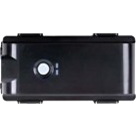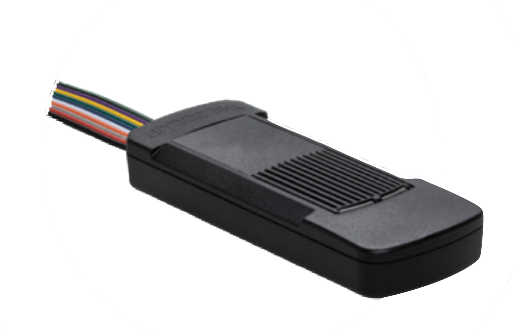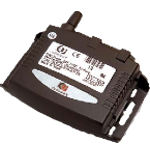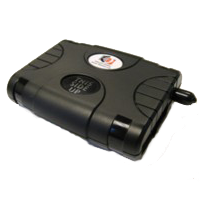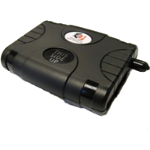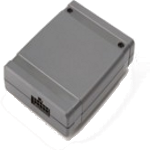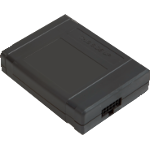| adc |
Analog input sensor |
|
| mcc |
Mobile Country Code |
|
| mnc |
Mobile Network Code |
|
| lac |
Location Area Code |
|
| cell_id |
cell ID
|
|
| flag |
Current GSM Operator (2 nd and 3 rd Nibbles) |
|
| unit_status |
0 bit - Communication with GPS is 1 - available / 0 - not available
1 bit - Network (0 - Home, 1 - Roam)
2 bit - Correct Time (1 - Invalid/estimated time stamp, 0 – Valid time stamp)
3 bit - Source of Speed (0 – GPS, 1 – Pulse frequency input)
|
|
| reason |
Transmission Reason Specific Data |
|
| reason_data |
Transmission Reason |
|
| pwr_int |
The voltage on the internal battery
|
|
| pwr_ext |
External power supply voltage
|
|
| services |
Bit 0 - Actual GNSS antenna selected (0 – Internal, 1 – External). (Relevant only for Cello GNSS variants)
Bit 1 - Trailer status indication. (0 – Trailer Disconnected, 1 – Trailer
Connected)
Bit 2 - 4 - CFE Type.
| Bit 4 |
Bit 3 |
Bit 2 |
CFE Type |
| 0 |
0 |
0 |
Not Applicable (Legacy state) |
| 0 |
0 |
1 |
CFE is not connected |
| 0 |
1 |
0 |
CFE BT is connected |
| 0 |
1 |
1 |
CFE Basic is connected |
| 1 |
0 |
0 |
CFE I/O is connected |
| 1 |
0 |
1 |
CFE premium is connected |
| 1 |
1 |
1 |
Undefined CFE Type |
|
|
| unit_mode |
Unit Mode of Operation. The functioning of the unit can be generalized as a finite state machine model, with a few "stages" of operation. The "current stage" is referred to as "unit mode", or "mode of operation", as following:
Value Unit Mode Description
0x00 Standby Engine On
0x01 Standby Engine Off
0x02 Passive Arming (for security modifications)
0x03 Pre-Arming (for security modifications)
0x04 Alarm Armed (for security modifications)
0x05 Silent Delay (for security modifications)
0x07 Alarm Triggered (for security modifications)
0x0E Garage Mode
0x0F Transmissions Delay (for FW versions older than 25)
0x10 Towed mode (same as Standby Engine On, but with ignition off)
|
|
| mode1, mode2 |
MODE 1 and Mode 2
These fields are generated by the GPS and transparently monitored in the outgoing message from the unit. The fields define the validity of GPS data in the message. The unit considers the valid fix according to the "Enable Tight GPS PMODE Filter" parameter (address 509, bit 7):
If "Enable Tight GPS PMODE Filter" is enabled, the unit considers the GPS data as valid only if Mode 1 = 3 or 4 AND Mode 2 = 2
If "Enable Tight GPS PMODE Filter" is disabled, the unit considers the GPS data as valid only if Mode 1 =2, 3, 4, 5 and 6
|
|
| odom |
Mileage Counter (Odometer) |
|
| t8fwd_#_# |
Prefix the naming of the parameters from the message of type 8 (Forwarded message).
If the protocol of the connected device provides for the transfer of the model name, it will be added to the prefix. For example: t8fwd_modelName_#.
Last part of the parameter name is the name of the parameter that the device sends.
|
|
| curr_odo_count |
Current Odometer Count |
|
| curr_trip_fuel_cons |
Current Trip Fuel Consumption (100 ml resolution)
|
ml |
| fuel_tank_lvl_ml |
Fuel Tank Level (100 ml resolution)
|
ml |
| fuel_tank_lvl_pc |
Fuel Tank Level
|
% |
| dlt_eng_hours_trip |
Delta engine hours in this trip |
Minutes |
| inputs |
Inputs status (Bits 1 - 32):
1 Bit - Door;
2 Bit - Shock;
3 Bit - 5 Bit - reserv;
6 Bit - Driving Status (Ignition or accelerometer based)
7 Bit - 14 Bit - reserv;
15 Bit - Accelerometer status;
16 Bit - Ignition port status;
17 Bit - 18 Bit - reserv;
19 Bit - Grad. Stop;
20 Bit - GPS Power;
21 Bit - 24 Bit - reserv;
25 Bit - LED out;
26 Bit - 27 Bit - reserv;
28 Bit - Blinkers;
29 Bit - reserv;
30 Bit - Standard Immobilizer;
31 Bit - reserv;
32 Bit - Charger status.
|
|
| outputs |
Outputs status (Bits 1 - 16):
1 Bit - 2 Bit - reserv;
3 Bit - Grad. Stop;
4 Bit - GPS Power;
5 Bit - 8 Bit - reserv;
9 Bit - LED out;
10 Bit - 11 Bit - reserv;
12 Bit - Blinkers;
13 Bit - reserv;
14 Bit - Standard Immobilizer;
15 Bit - reserv;
16 Bit - Charger status.
|
|
| f_speed |
Speed. (Fractional value)
|
km/h |
| f_course |
Course (Fractional value)
|
degrees |
| avl_driver |
Vehicle driver code
|
|
| calibrated |
Calibration Status: 0-Ready, OR 1-Currently Calibrating
|
|
| msg_type |
Type of the incomming message
|
|
| last_gps_fix |
This field monitors a timestamp, when the GPS was last in navigation mode. NOTE: The easiest way to define if the GPS data in the message is valid and updated, or historical, is to compare between the time of the timestamps and UTC time Format: day-hour-minute
|
|
| msg_num |
Sequence number of message
|
|
| cntrl |
This is a bitmapped field, which contains flags that provide information about the message and the situation in which it was originated. For more information, see the protocol.
|
|
| hw_id |
Unit’s hardware version (full data)
|
|
| hw_type |
Legacy HW ID (Please see description in the protocol: 2.2.3.6 Unit’s Hardware, Firmware and Protocol Versions
)
|
|
| hw_type_dec |
HW Type (representation in decimal form)
|
|
| sw_ver_dec |
Unit’s software version (representation in decimal form)
|
|
| modem_code |
Modem code
|
|
| sw_ver |
Unit’s software version [Firmware version][Firmware sub-version], where firmware version
usually defines the unit family and the sub-version defines the list of supported features.
For example, 30a:
Version – 30
Sub-Version – a
|
|
| proto_ver |
Protocol Version
|
|
| ar |
AR Functionality Enabled 0 - Fleet base 1 - AR functionality added to Fleet
|
|
| iq |
Feature package: 0 = Old/Legacy (not to be used in new units) 1 = "IQ30" 2 = "IQ40" 3 = "IQ50"
|
|
| mileage |
Mileage
|
|
| sys_time |
Time represented in seconds (0-59), minutes (0-59), and hours (0-23), based on internal timer of the unit
|
|
| valid_sys_tm |
Validation of system time 1 - valid 0 - invalid
|
|
| hw_type, modem_code |
Unit HW (PCB) version and the ID of the modem embedded in it.
NEW HD ID
(8 bits) |
Legacy HW ID
(5 bits) |
Product name
|
Modem Code
(3 Bits)
|
Modem Type
|
| 225
|
1
|
CR300
|
7
|
GE864-QUAD-V2
|
| 2
|
2
|
CFE
|
0
|
No modem
|
| 170
|
10
|
CelloTrack 1 Output
|
5
|
Enfora 3
|
| 235
|
11
|
CR300B
|
7
|
GE864-QUAD-V2
|
| 172
|
12
|
CelloTrack
|
5
|
Enfora 3
|
| 78
|
14
|
Cello-IQ GNSS
|
2
|
GE910 QUAD V3
|
| 18
|
18
|
CelloTrack T (2G)
|
0
|
Telit GE910 QUAD (V2) (V3)
|
| 82
|
18
|
CelloTrack T (3G)
|
2
|
Telit HE910 NAD
|
| 114
|
18
|
CelloTrack T (3G)
|
3
|
Telit UE910 EUD
|
| 19
|
19
|
CelloTrackPower T (2G)
|
0
|
Telit GE910 QUAD (V2) (V3)
|
| 83
|
19
|
CelloTrackPower T (3G)
|
2
|
Telit HE910 NAD
|
| 115
|
19
|
CelloTrackPower T (3G)
|
3
|
Telit UE910 EUD
|
| 20
|
20
|
Cello-CANiQ (NA)
|
0
|
UE910 NAR
|
| 52
|
20
|
Cello-CANiQ (EU)
|
1
|
UE910 EUR
|
| 84
|
20
|
Cello-CANiQ (2G)
|
2
|
GE910 QUAD V3
|
| 183
|
23
|
CelloTrack Power
|
5
|
Enfora 3
|
| 216
|
24
|
Cello-F (Telit)
|
6
|
Telit GE864, automotive
|
| 249
|
25
|
Cello-F Cinterion
|
7
|
Cinterion BGS3
|
| 221
|
29
|
CR200
|
6
|
Telit GE864, automotive
|
| 222
|
30
|
CR200B
|
6
|
Telit GE864, automotive
|
| 223
|
31
|
Cello-IQ
|
6
|
Telit GE864, automotive
|
| 38
|
6
|
Cello-D
|
1
|
UE910 NAR
|
| 70
|
6
|
Cello-D
|
2
|
UE910 EUR
|
| 136
|
8
|
CelloTrack Nano 10 GNSS
|
4
|
Cinterion BGS2-W
|
| 168
|
8
|
CelloTrack Nano 10 3G GNSS
|
5
|
Cinterion EHS6A
|
| 9
|
9
|
Cello-CANiQ CR (NA)
|
0
|
UE910 NAR
|
| 41
|
9
|
Cello-CANiQ CR (EU)
|
1
|
UE910 EUR
|
| 73
|
9
|
Cello-CANiQ CR (2G)
|
2
|
GE910 QUAD V3
|
| 105
|
9
|
Cello-CANiQ CR (2G) - Car Sharing
|
3
|
GE910 QUAD V3
|
| 169
|
9
|
Cello-CANiQ CR (3G) - Car Sharing
|
5
|
UE910 NAR
|
| 201
|
9
|
Cello-CANiQ CR (NA) – Aux
|
6
|
UE910 NAR
|
| 233
|
9
|
Cello-CANiQ CR (EU) – Aux
|
7
|
UE910 EUR
|
| 43
|
11
|
CR300B 3G NA GNSS
|
1
|
UE910 NAD
|
| 75
|
11
|
CR300B 3G EU GNSS
|
2
|
UE910 EUD
|
| 107
|
11
|
CR300B 2G
|
3
|
GE910 QUAD V3
|
| 139
|
11
|
CR300B 2G SIRFV
|
4
|
GE910 QUAD V3
|
| 77
|
13
|
Cello-IQ CR GNSS
|
2
|
GE910 QUAD V3
|
| 116
|
20
|
Cello-CANiQ (2G) – Car
Sharing
|
3
|
GE910 QUAD V3
|
| 212
|
20
|
Cello-CANiQ CV
|
6
|
CE910 Dual V
|
| 244
|
20
|
Cello-CANiQ CS
|
7
|
CE910 Dual S
|
| 53
|
21
|
PointerCept Base Station
|
1
|
No modem
|
| 26
|
26
|
CelloTrack Nano 20
|
0
|
Cinterion BGS2-W
|
| 122
|
26
|
CelloTrack Nano 20 3G
Worldwide
|
3
|
Cinterion EHS6A
|
|
|
| HDOP |
Horizontal dilution of precision | HDOP Value
|
Rating
|
Description
|
|---|
| <1
|
Ideal
|
Highest possible confidence level to be used for applications demanding the highest possible precision at all times.
|
| 1-2
|
Excellent
|
At this confidence level, positional measurements are considered
accurate enough to meet all but the most sensitive applications.
|
| 2-5
|
Good
|
Represents a level that marks the minimum appropriate for making
accurate decisions. Positional measurements could be used to make
reliable in-route navigation suggestions to the user.
|
| 5-10
|
Moderate
|
Positional measurements could be used for calculations, but the fix
quality could still be improved. A more open view of the sky is
recommended.
|
| 10-20
|
Fair
|
Represents a low confidence level. Positional measurements should be
discarded or used only to indicate a very rough estimate of the current
location.
|
| >20
|
Poor
|
At this level, measurements are inaccurate |
|
|
| CAN Bus Status |
Byte 0: Module 24 - CAN Bus Status Byte 1-2: Length of module 6
Byte 3: OBDII CAN Bus State
- 0 - Unknown
1 - Disconnected
2 - Connected
Byte 4: CAN Bus Rate
- 0 - 125 Kbps
1 - 250 Kbps
2 - 500 Kbps
3 - 1 MbpsByte
Byte 5: CAN Bus Format
Byte 6: Spare
Byte 7: Spare
Byte 8: Spare
|
|














